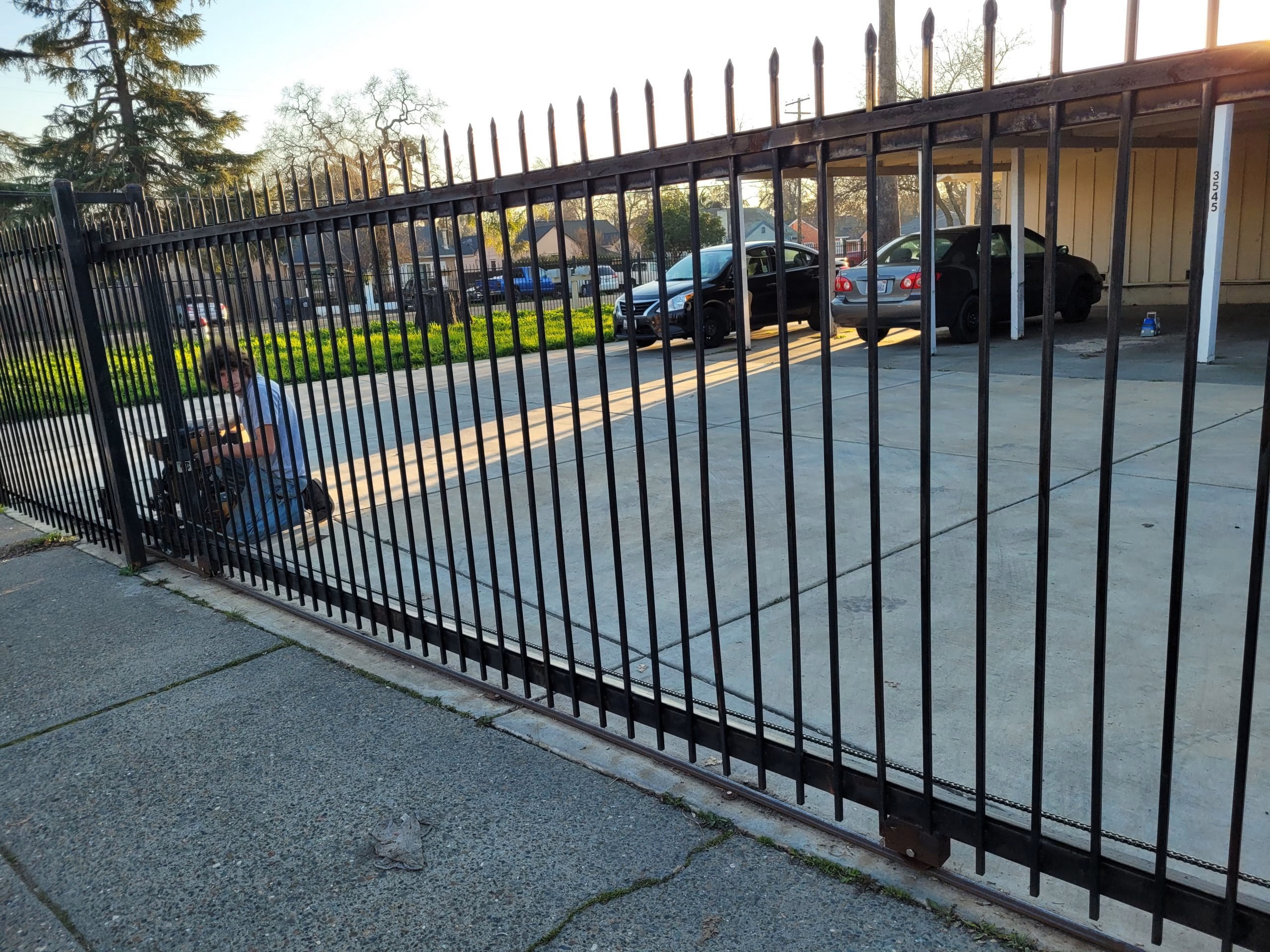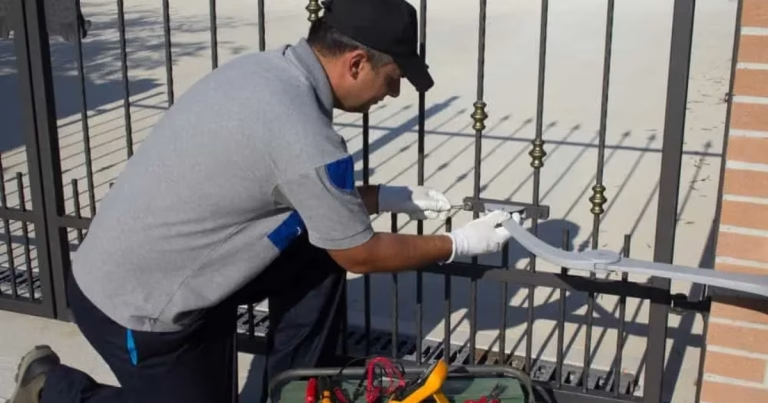Looking for the best gate latch for your home? Learn about different types of gate latches, their uses, and how to choose the most secure and functional option for your residential property.
Choosing the right gate latch for your home is more than just a hardware decision. It plays a direct role in the safety, convenience, and overall functionality of your property’s entryways. Whether you’re installing a new gate or replacing an old latch, your selection should align with your needs for security, ease of use, and longevity.

Many homeowners are unfamiliar with the different types of gate latches available. From basic spring latches to more advanced keyed systems, each type serves a specific purpose. The right latch can secure your home’s perimeter, keep children and pets safe, and offer peace of mind.
This blog will explore the most common types of gate latches and the key factors to consider when selecting one for your home. By understanding the functionality and benefits of each style, you can make a more informed decision that meets your residential security requirements.
Exploring the Different Types of Gate Latches
When shopping for gate hardware, knowing the available types of gate latches will help you determine which one is best suited for your home. Each type has its own locking mechanism, usability features, and installation needs.
Thumb Latches
Thumb latches are a classic style typically used on wooden gates. They consist of a decorative plate with a thumb-press mechanism on one side and a latch arm on the other.
Best For: Traditional wooden gates
Benefits:
- Visually appealing
- Simple mechanical design
- Can be opened from both sides of the gate
Ring Latches

Ring latches feature a ring handle on each side of the gate. Turning the ring lifts a latch bar to release the gate. This type is common on garden gates and lighter residential fences.
Best For: Garden gates, picket fences
Benefits:
- Operable from both sides
- Easy to use
- Moderate security level
Gravity Latches
A gravity latch automatically secures when the gate closes. The latch arm drops into place with gravity, making it self-locking. Some models can be padlocked for additional security.
Best For: Metal or wooden backyard gates
Benefits:
- Hands-free closing
- Simple to operate
- Inexpensive and reliable
Bolt Latches (Slide Bolts)
Bolt latches slide a metal rod into a receiver plate to secure the gate. They are typically mounted on the inside of the gate, making them ideal for privacy.
Best For: Backyard gates, pool areas, double gates
Benefits:
- High level of security
- Can be padlocked
- Good for internal access
Keyed Latches and Locks
These latches use keys to lock and unlock the gate. Ideal for those looking for enhanced security and restricted access, they’re often integrated with metal or composite gates.
Best For: Side gates, main entry gates
Benefits:
- Controlled access
- High security
- Weather-resistant options available
How to Choose the Best Gate Latch for Residential Use

Selecting the right gate latch for your home involves more than just aesthetics. It requires considering where the gate is located, how often it’s used, and who will be interacting with it. The right latch balances style, functionality, durability, and safety.
Consider Gate Location and Usage
Front Yard and Decorative Gates
For gates where appearance is a priority—such as those in front yards or gardens—opt for visually appealing options like thumb latches or ring latches. These styles complement wooden or ornamental gates while still offering functional access.
High-Traffic or Security-Sensitive Areas
If your gate is used frequently or needs added security, keyed latches or slide bolts are better choices. These offer more robust locking mechanisms, ideal for side gates or backyard entrances where security is a concern.
Match the Latch to the Gate Material
Heavier Gates
For large or heavy gates—especially metal or reinforced wood—select steel bolt latches or other heavy-duty options. These can withstand repeated use and support the weight without bending or wearing out quickly.
Lightweight or Decorative Gates
Gates made from lighter materials, such as decorative wood or vinyl, are best paired with thumb latches, ring latches, or gravity latches that are easier to operate and visually complementary.
Think About User Convenience and Safety
Hands-Free or One-Handed Operation
If you frequently have your hands full (carrying groceries, holding a child, etc.), consider a self-latching or gravity latch. These automatically secure the gate after closing and can often be opened with one hand.
Homes with Children or Pets
To prevent accidental openings, choose latches with locking capabilities. These are especially important for pool gates, backyard enclosures, or areas where pets could escape.
Materials and Durability Considerations
When choosing a latch, focus on the material and how durable it is. The right materials and protection can help the latch last longer, especially in outdoor environments.
Common Latch Materials
The material used in a latch greatly influences its strength and resistance to wear. The most commonly used materials include:
- Stainless Steel: Highly resistant to rust and corrosion, stainless steel is ideal for outdoor use, especially in coastal or high-humidity areas. It offers long-term durability with minimal maintenance.
- Zinc-Plated Steel: More affordable than stainless steel, this material is coated with zinc to offer moderate rust protection. While not as robust as stainless steel, it performs well in standard outdoor settings.
- Powder-Coated Metal: This finish adds a protective layer to various metal types, enhancing weather resistance and aesthetics. It’s a popular option for decorative or painted hardware.
Weather Resistance Features
A latch’s ability to withstand weather is crucial for maintaining smooth operation over time. Look for features such as:
- Sealed Components: Prevent moisture and debris from entering the latch mechanism, reducing the risk of rust and internal damage.
- Rubber Gaskets or Covers: Help seal out rain, snow, and ice, which is especially important in freezing climates where latches can jam or freeze.
- UV-Resistant Finishes: Important in sunny environments to prevent fading, cracking, or weakening of plastic components.
Maintenance for Longevity
Even with high-quality materials, routine care can make a big difference:
- Regular Lubrication: Applying a lubricant to moving parts prevents friction and freezing.
- Tightening Screws: Helps maintain alignment and reduces strain on the latch mechanism.
- Inspection and Cleaning: Periodically removing dirt and buildup will keep the latch functioning smoothly.
Long-Term Cost Benefits
Investing in durable materials and proper installation may cost more initially, but it leads to fewer replacements and repairs over time. A well-maintained, high-quality latch not only performs better but also saves you money and hassle in the long run.
Frequently Asked Questions
What is a gate latch?
A gate latch is a mechanical device used to keep a gate securely closed and allow it to be easily opened when needed. It typically consists of a catch or bolt mechanism that locks into a corresponding strike or plate on the gate frame. Gate latches can be manually operated or automatic, depending on the design and use case.
What are the different kinds of gate latches?
There are several types of gate latches, including thumb latches, gravity latches, bolt latches, ring latches, and magnetic or keyed latches. Each type serves different functions—for example, gravity latches are common on residential gates, while bolt latches are often used for added security. Some latches are lockable for extra protection.
How to choose a gate latch?
When choosing a gate latch, consider factors like gate material, location (indoor or outdoor), security needs, and ease of use. For high-security areas, a keyed latch or combination lock is ideal, while for decorative garden gates, a simple thumb or ring latch may suffice. Also, ensure the latch is compatible with your gate’s thickness and swing direction.
What is the best height for a gate latch?
The ideal height for a gate latch is typically between 36 and 48 inches from the ground. This makes it accessible for most adults while keeping it out of easy reach of small children and pets. The exact height may vary based on local regulations or safety needs.
What are the different parts of a gate latch?
A typical gate latch includes the latch arm or bolt, a catch or strike plate, mounting brackets, and often a handle or thumb piece. Some latches may also include locking mechanisms or keys for added security. The configuration can vary based on the latch type and intended use.
Conclusion
Understanding the various types of gate latches enables you to select the most suitable one for your home’s specific needs. Each type offers specific benefits based on its installation location and intended use. Whether you need convenience, aesthetics, or high-level security, there’s a latch designed to meet that purpose.
From gravity latches that lock automatically to keyed systems that enhance security, understanding the options will help you make a smarter investment. Don’t overlook the importance of materials and design compatibility to ensure smooth operation for years.
If you’re unsure which latch works best for your setup, Central Valley Gates & Access Controls is ready to help. We offer expert recommendations, high-quality hardware, and professional installation services for residential properties.
End Note
Central Valley Gates & Access Controls provides personalized gate solutions tailored to your specific needs, ensuring optimal security and functionality. We specialize in gate operator installations, custom vehicle gate installations, and LiftMaster automation systems for residential use.
We proudly serve Fair Oaks, North Highlands, and Sacramento County with quality hardware, dependable repairs, and lasting craftsmanship. Our team ensures that your home is both functional and secure with every service we provide.
To learn more about us, read real customer reviews, or follow us on Facebook and Instagram for updates and project photos. Reach out today using our contact form to schedule your consultation.
Central Valley Gates and Access Controls
4817 Myrtle Ave Suite C, Sacramento, CA 95841, United States
+19167454011



